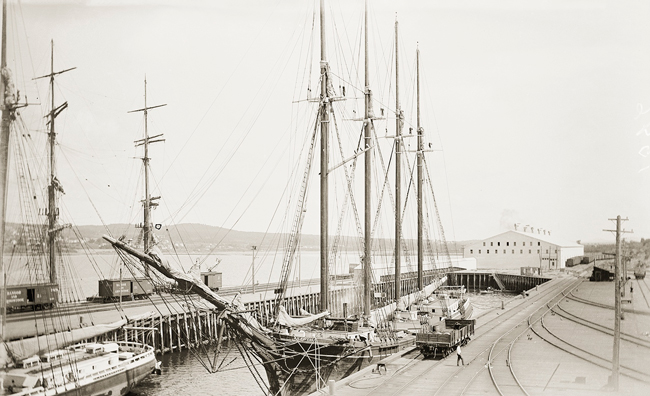B A C K T H E N
Northern Maine Seaport
The Northern Maine Seaport, at Cape Jellison, an overly ambitious port facility, was built by the Bangor & Aroostook Railroad in 1905 as an ice-free outlet for potatoes, lumber, shook, pulp and paper, and for receiving fertilizer, coal, cement, paper-making supplies, and so on. A branch line connected with the main line at Lagrange. The white potato house measured 600 by 125 feet and could hold 240,000 barrels. Electricity from an on-site powerhouse moved the potatoes about and bagged them for shipment. Italian laborers built it all.
A great future for the new port was predicted, but after several busy years, shipments declined as timberlands were depleted, the potato boom slumped, fertilizer plants were built elsewhere, and freight transport by rail increased. In 1924 it all went up in smoke. At nearby Mack Point, in Searsport, where a coal pocket was built, shipping continues to this day.
The four-masters D.H. Rivers, at center, and the L. Herbert Taft, whose stern is seen at left, both hailed from Thomaston and were owned by the firm of Dunn & Elliot. Possibly they arrived with phosphate from Tampa. The square-rigger—she is a bark—may be Italian and loading hard-wood fruit-box shook for Sicily.
Text by William H. Bunting from Maine On Glass. Published by Tilbury House Publishers, 12 Starr St., Thomaston, Maine. 800-582-1899.
Maine On Glass and prints of the photographs are available through the Penobscot Marine Museum: PenobscotMarineMuseum.org.

